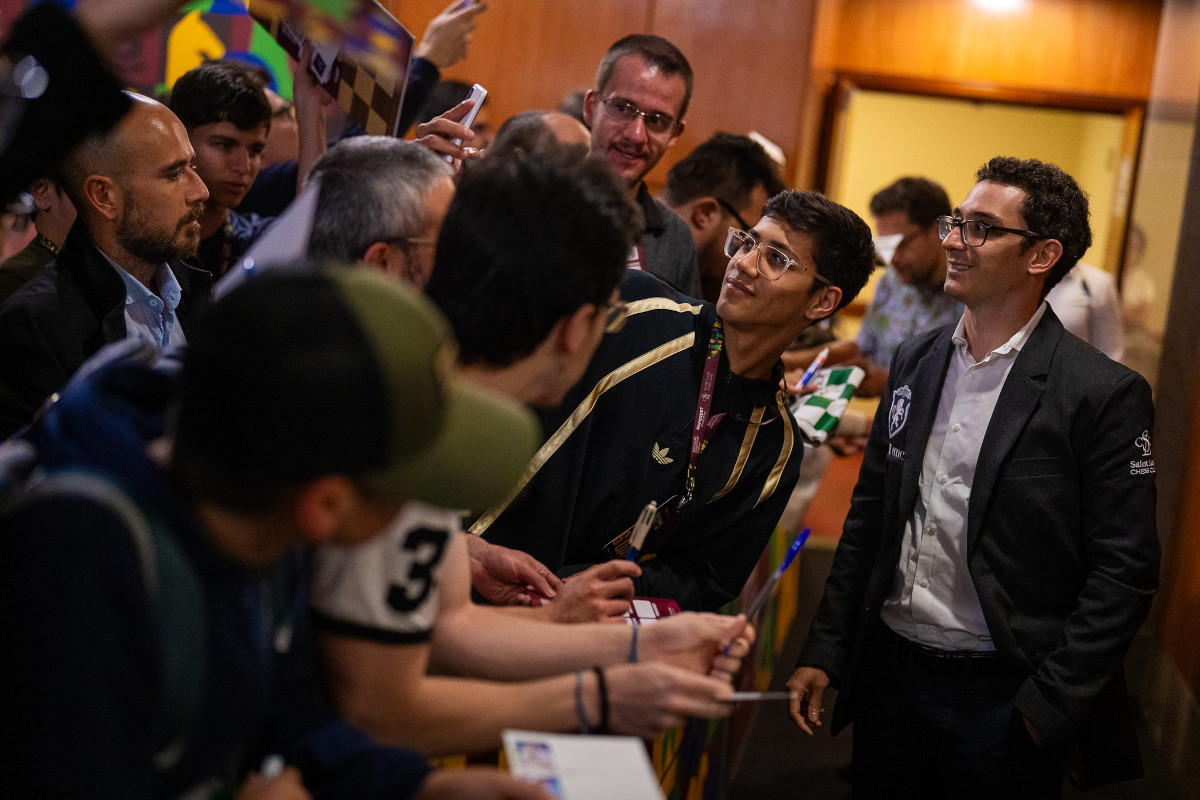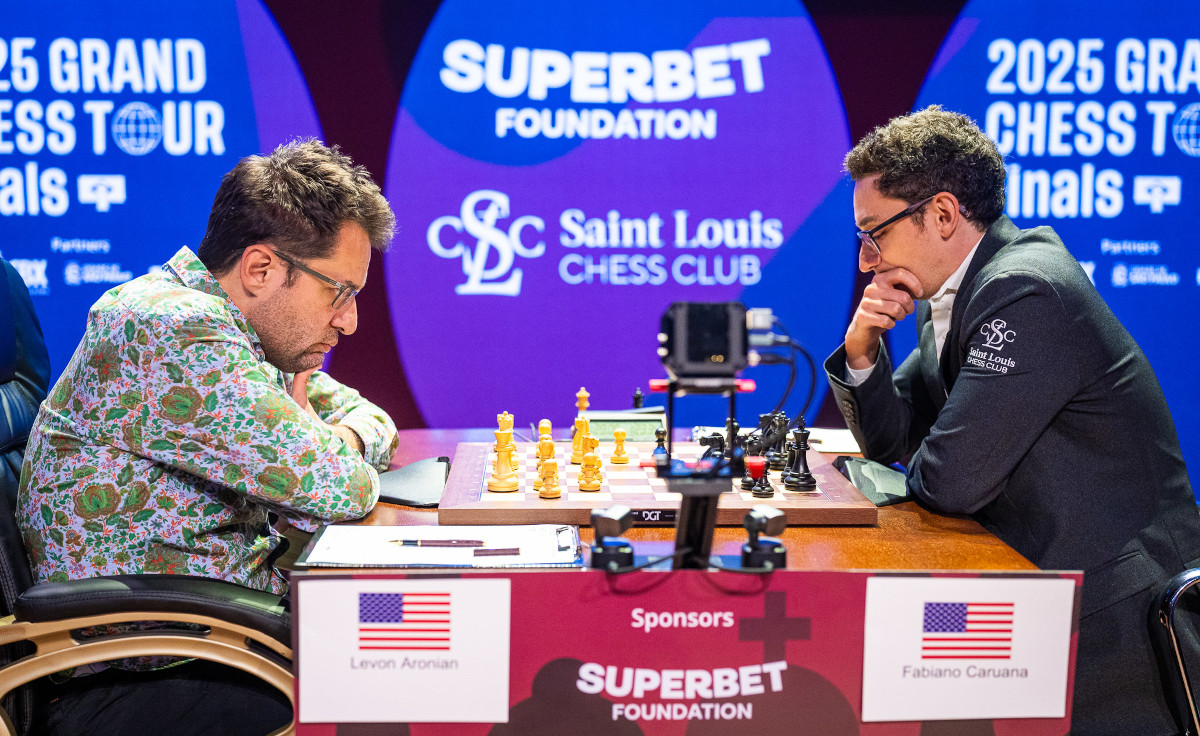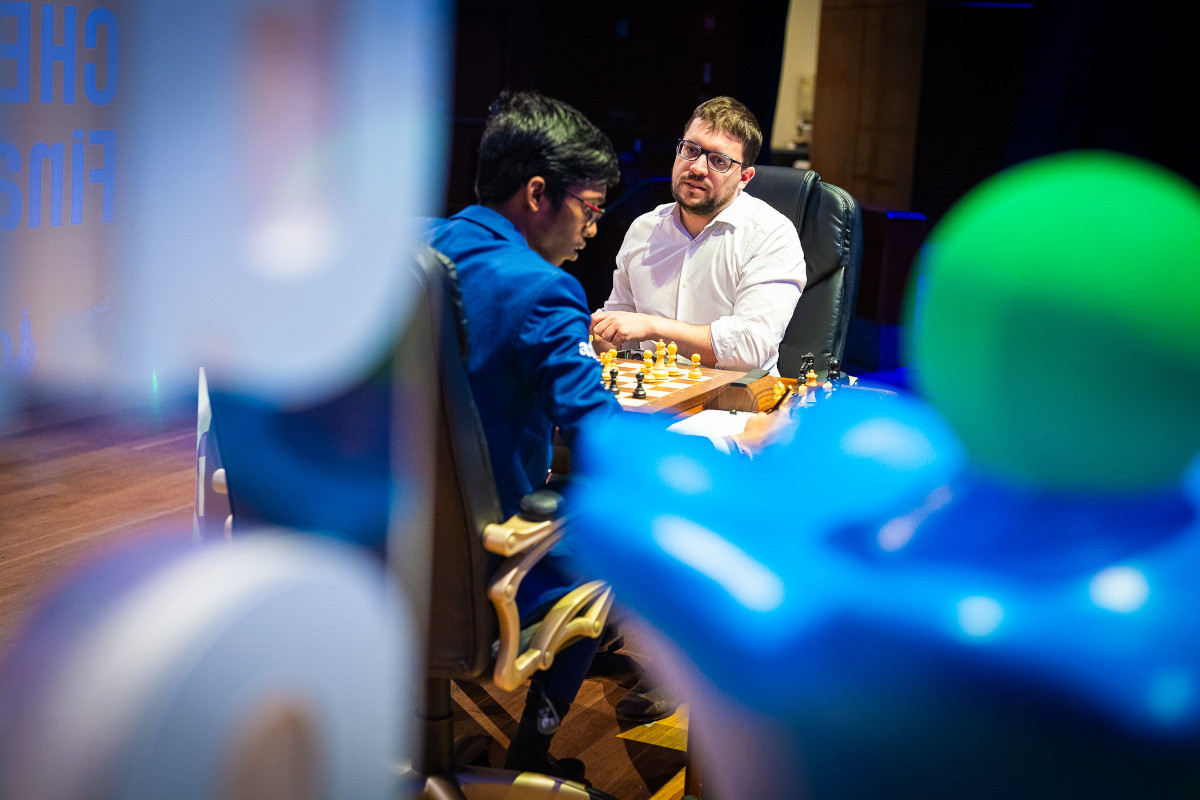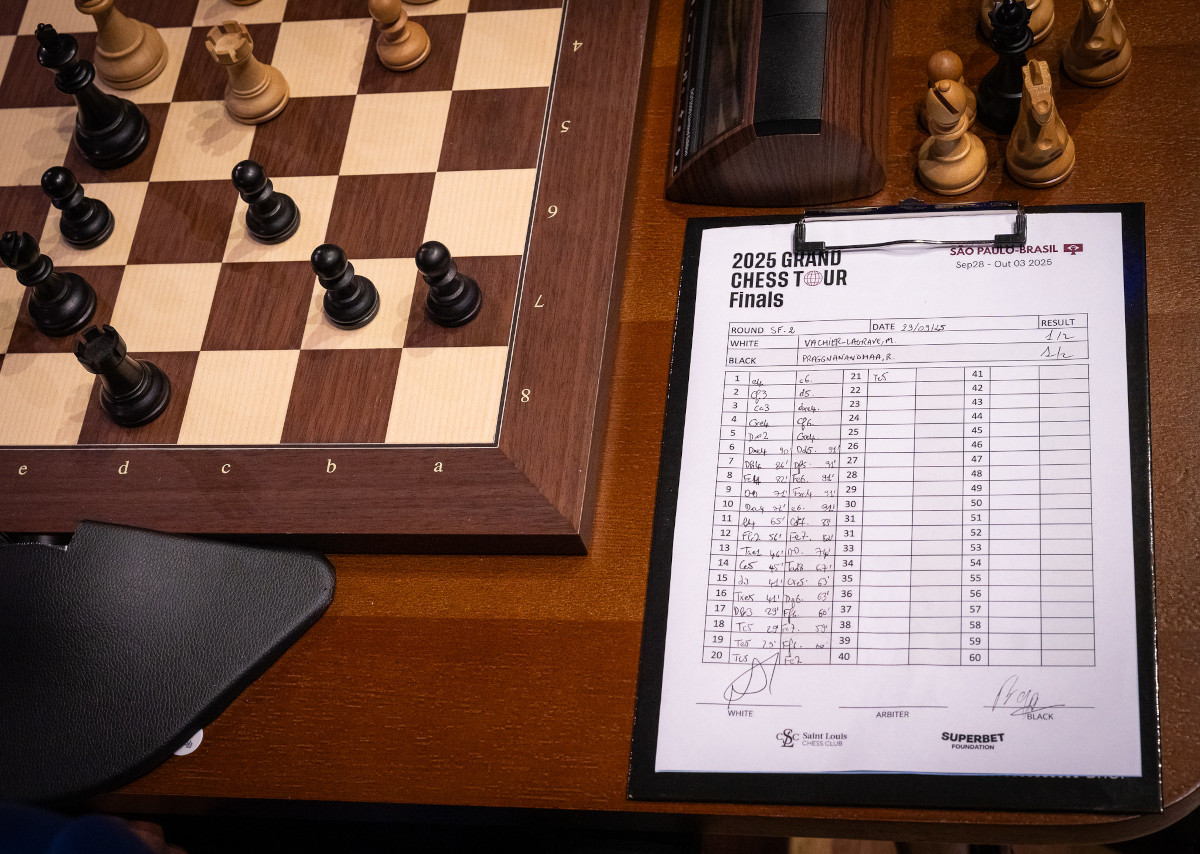On the rapid and blitz with equal scores
The second day of classical play at the Grand Chess Tour Finals brought few surprises, as both games were drawn without much of a fight. The contests, played at the World Trade Center in São Paulo, were notable more for their brevity than for sharp play, with both concluding in less than two hours.
That left the two semifinals deadlocked at six points apiece, since a draw in classical games is worth three points for each player. The classical phase is now complete, and the competition moves forward into the faster time controls, where the points system is weighted differently.

Brazilian fans taking selfies with Fabiano Caruana | Photo: Lennart Ootes
The encounter between Levon Aronian and Fabiano Caruana was the first to finish. With White, Aronian met Caruana’s early 2…g6 with a restrained approach. Caruana noted afterwards that his move order was an invitation to enter a Grünfeld or King’s Indian Defence, both of which can lead to double-edged struggles. Aronian, however, opted for stability and quickly traded pieces to steer the game away from any sharp complications.
Caruana explained later that his setup was a conscious attempt to show he was ready for a wide-open battle, but at the same time, if White keeps matters solid, Black often has little choice but to follow suit. The balance was never seriously disturbed, and the game concluded quietly after 26 moves.

Levon Aronian facing Fabiano Caruana | Photo: Lennart Ootes
Meanwhile, Maxime Vachier-Lagrave faced Praggnanandhaa Rameshbabu in the other semifinal. The French grandmaster, with White, was caught off guard by Black’s seventh move in the Caro-Kann Defence.
Seeking to keep matters simple, Vachier-Lagrave responded with 8.Bc4, a choice he afterwards described as unlikely to test Black seriously. Pragg equalised swiftly and by move 12 had already neutralised any hint of pressure.
Master your middlegame with the complete strategy series – now available as a bundle at a reduced price. Take your chance to save and improve!
The Indian later noted that by that point there was nothing left for White to pursue. From there the game moved towards simplification, and after 21 moves the players agreed a draw.
Despite his own ambitions to push harder with the black pieces, Praggnanandhaa showed no frustration with the result, acknowledging that in such situations it is better to accept balance rather than overreach.

Maxime Vachier-Lagrave playing white against Praggnanandhaa R. | Photo: Lennart Ootes
The conclusion of the classical segment means that the four players will now rely on their skills at shorter time controls to decide the outcome of the semifinals. Two rapid games, played at 25 minutes plus a 10-second increment, will be followed by four blitz games with a time control of 5 minutes plus a 2-second increment.
The scoring system also changes: a win in rapid play is worth four points, while a win in blitz is worth two. With all four players still level, the contest is set to become far less predictable, as momentum can shift quickly once the pace of play accelerates.

MVL’s scoresheet from Monday’s game | Photo: Lennart Ootes
